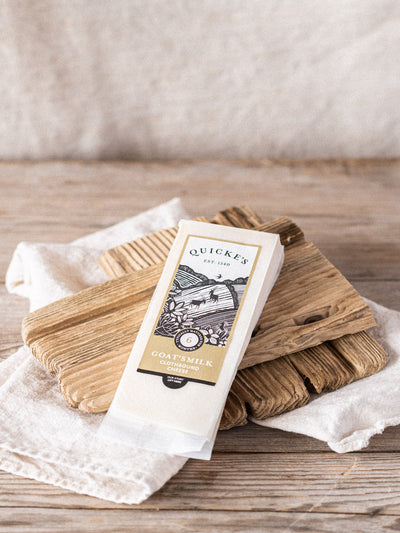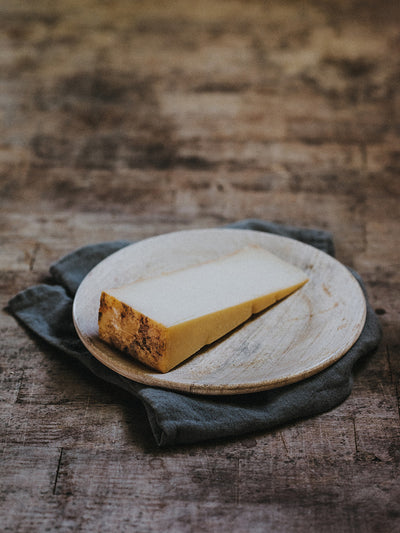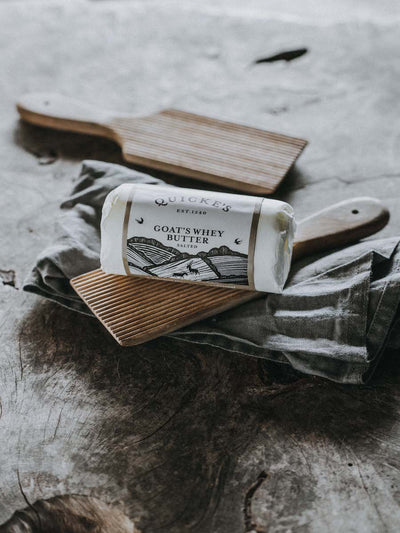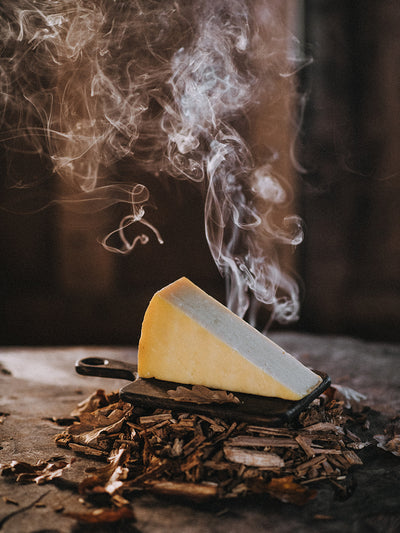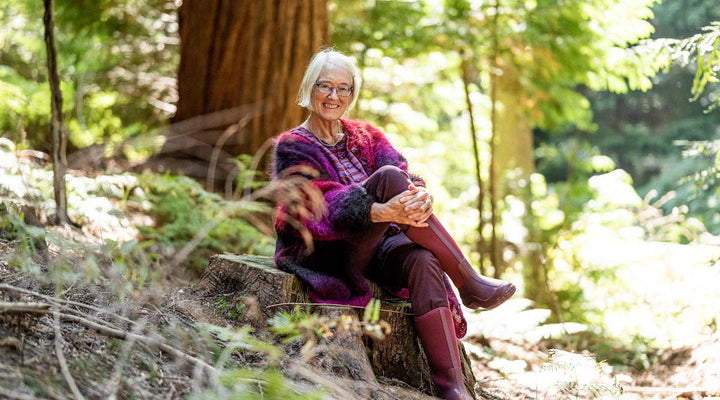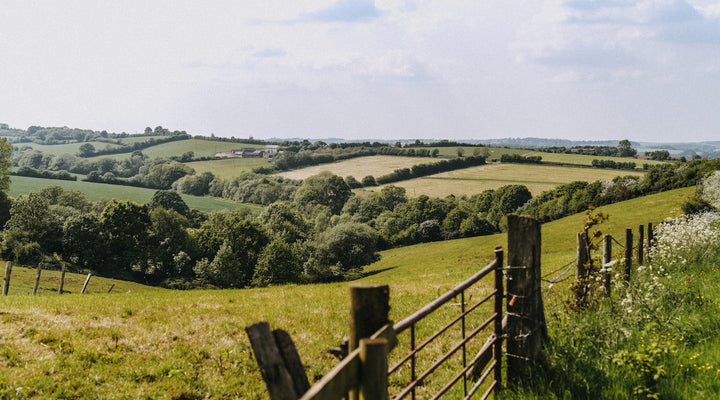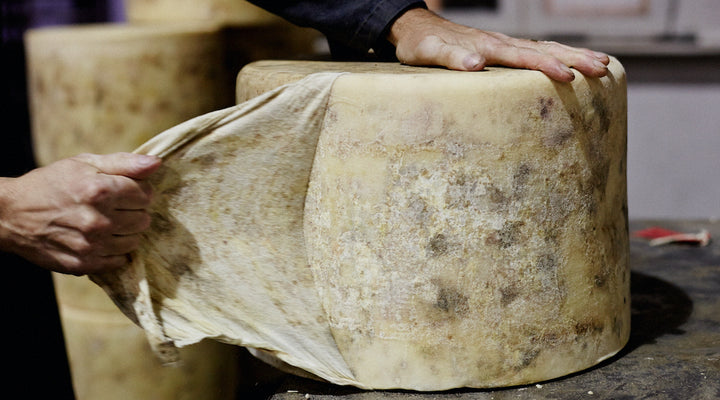NATURE
August, where we hope both for rain to grow the grass and fine weather to harvest the crops. We’ll be happy with some good heavy rain every couple of weeks to keep the grass growing, and fine weather the rest of the time.
The countryside is looking dry after the heatwave. Late summer flowers scent the hedgerows, honeysuckle and meadowsweet. I start seeking out the earliest of the blackberries. There are hundreds of different blackberry subspecies and there is a sweet and juicy one somewhere on the farm from now till the end of September. The very earliest apples, leasing me to think of blackberry and apple crumble.
We will be taking part in ‘24 hours in farming’- August 4th-5th - a virtual event run by the Farmers Guardian and sponsored by Morrisons, which celebrates British farming and offers a valuable insight into where and how our food is produced. Last year people enjoyed seeing 'a day in the life of our farm team'. nWe will be doing the same this year. Follow along on our socials, our email or by visiting our website.
It’s lovely to see the dragonflies dancing on the river, and trout rising in the dappled light to catch a meal. The house martins and swallows have restored their numbers: so few arrived in the spring and now the sky is full of them. Do flies go that high or do they fly for the sheer joy of their mastery of the sky?
We saw a young buzzard, still with her pale juvenile feathers, sitting close by on tree, sagely taking in the scene before taking off heavily across the valley when she saw us.
ARABLE
We are harvesting: crops are ripening early in the heat. The crops now rely on roots chasing the moisture down. This is when we see if our work on soil structure and organic matter has made the difference. The early harvested barley was respectable. The combine makes its stately way across the landscape, tractor and trailer in attendance like a bridesmaid, running back to the store with its precious harvest. Our aim is to feed our crops as far as possible from our animals’ manure and feed our animals as far as possible from our crops and grass. We harvested some barley and peas together as a silage. We will mix it with some maize to harvest early September (at least that is enjoying the hot weather) to make a high protein silage. I visited a cheesemaker in Lincolnshire on the Specialist Cheesemakers Association Farm Walk who grows that mix to feed their cows.nThey also sow grass and clover underneath the barley and peas so the next crop is already coming along when you take the whole crop silage. Something to try for next year.
We bale the straw and take back to the barn. We spread manure: last year’s straws dung to feed the soil, and get a crop in immediately to preserve nutrients. We sowed a crop of rye after the early harvested barley: we will take a silage crop in the spring and then put in that pea/ barley mix. t’s the theme of regenerative farming to keep a crop growing to look after the soil. We saw rye corn grown as a green crop at some neighbouring farms. Farmers are very open and love to share their successes with other farmers: it’s the main way we develop what we do.
COWS
The autumn calving heifers are now coming to join the herd, calving for the first time at the middle of the month. They are sleek, beautiful and curious. They come and greet us as we check them over, some keen for a scratch on their poll and behind their ears where they can’t reach themselves. We leave the field with heifer dribble where they have throughly investigated us by sniffing and licking with their rough tongues.
We sold bull calves born last year that we had reared. Dairy breeds taste good and tend to be less muscly than beef breeds. We feed them well to grow fast so they don’t get too lanky. We sell them to someone who will finish them, put the final layer of fat on them before they go for slaughter. It is sad to see them go, and we never form the relationships with them that we form with the heifers who stay in the herd and produce milk. It’s what we need to get our minds round to be happy eating cheese and beef.
The autumn cows are on their summer holidays, resting from milking while their calves grow big inside them. They will graze ‘standing hay’, grass that has got long and full of seed heads: belly fill: t hey are shiny-coated with enough fat on them. Eating low energy density food is my recipe for satiety without gaining too much weight: I’ve learned from the cows. The cows produce their calves from the middle of August outside, mostly without assistance. The cow finds a quiet corner of the field and gets on with it. We come out and find the little tottering calf nuzzling its mother. We must make sure the calf has had enough colostrum, that vital first milk full of antibodies that go straight into the calf’s bloodstream, giving it the full library of its mother’s immunity from disease.
DAIRY
After the cheese dairy’s annual deep clean and maintenance fortnight, we are back making cheese. We need to make a lot of our 1.8kg truckles for Christmas after a welcome order from Canada left us short. It’s lovely to send our cheese off on its travels, a little taste of our farm all over the world.
We sent off cheese for the second Affineur of the Year competition. Makers and mongers are maturing them in different ways so we can all learn. This year, competitors will also be maturing a Cropwell Bishop Stilton, a White Lake washed rind, a soft mould ripped Baron Bigod to start to understand difference cheese styles. We will come together in London next June to taste the results.
This month we select the cheese for the World Cheese Awards. Our cheese will be judged with around 4000 others: it’s an accolade to win a medal there. This year, it was going to be held in Kiev and sadly we can’t do that. It’s going to be held in Newport, in Wales. We will think of Ukraine when we are there. I hope we will get back to Kiev soon.
RECIPE
We will also be topping up our goats cheese. It’s National Goat's Cheese Month. It’s a summery cheese, with a nutty gentle flavour. I love it as an accomplishment to desserts, and what better dessert than blackberry and apple crumble from the first of the season’s fruit?
I pick some blackberries and find some Early Victoria cooking apples, and skin, core and slice them into an oven-proof dish. I put that into an oven at 160oC and let it soften. With sweet blackberries, I don’t need any extra sugar, and to taste. I love making the crumble with quinoa, buckwheat and millet flakes, maybe with some teff and chestnut flour for a tasty gluten free topping. I use the same amount of Quicke’s Lady Prue mixed milk whey butter and brown sugar, with a combined weight a little less than the grains, so it is toasted and not dry or too flapjacky. Bake while you are eating your main course. Eat with cream and a slice of Quicke’s Hard Goats cheese as a sophisticated accompaniment.

